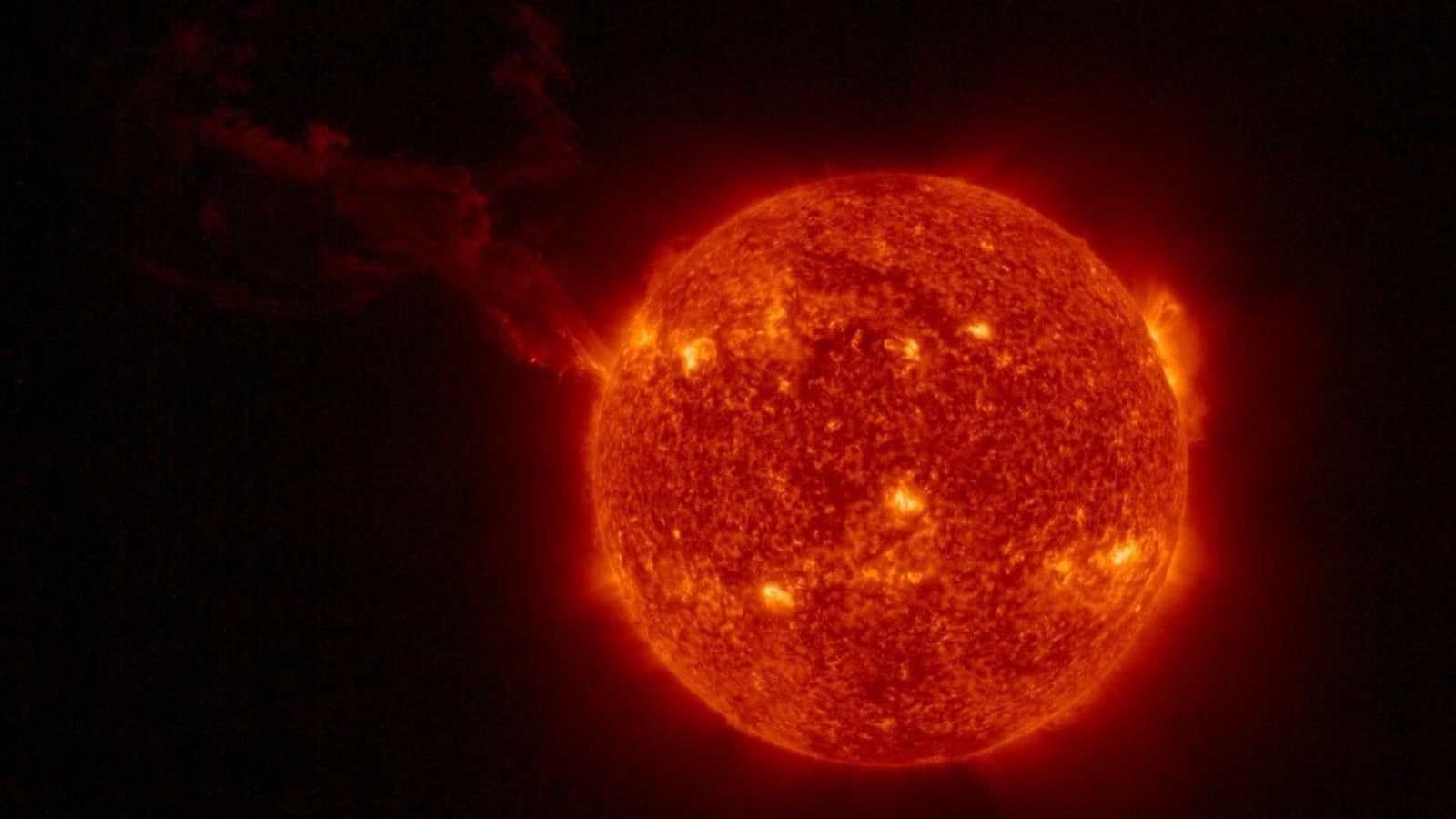More solar flare eruptions, and a CME increase Earth’s solar storm troubles, reveals NASA
The Sun’s onslaught continues as in the last 24 hours, a solar flare has erupted, and a CME has been hurled towards the Earth, reveals NASA data. This has raised fresh concerns about a solar storm on December 9.

It has been three days of non-stop solar activity from the Sun, and it does not appear to slow down anytime soon. After a minor solar storm on Monday and three different solar flare eruptions on Tuesday, the last 24 hours have also been filled with similar activity. Another solar flare, stronger than any we have seen this week, erupted yesterday, December 6, and a separate ‘sigmoid eruption' may have hurled a coronal mass ejection (CME) towards the Earth, data from NASA has shown. The latter can spark a solar storm on December 9, as per early forecast. The prediction models will be able to give us a better picture in the hours to come.
According to a post by the official X account of Space Weather Live, a moderate M2.35 solar flare erupted 7 hours ago, triggering a short-wave radio blackout. But luckily the geoeffective area fell on the large uninhibited area of the Pacific Ocean.
The threat of a solar storm
The impact of the solar flare is gone, but the danger of a solar storm still hangs above our heads. According to a report by SpaceWeather.com, NASA's Solar Dynamics Observatory recorded a sigmoid eruption yesterday. Considered to be a strong eruption, it is an S-shaped magnetic filament that creates a splash of debris more than 100,000 kilometers wide when it erupts.
“This one *might* have hurled a faint CME toward Earth. We're not sure because multiple CMEs were leaving the sun at the time of the blast, and there was much confusion. Don't be surprised if a sigmoid CME delivers a weak but direct blow to Earth's magnetic field on Dec. 9th,” highlighted the report.
How NASA SOHO watches the Sun
NASA's SOHO is a satellite that was launched on December 2, 1995. It is a joint project between NASA and the European Space Agency (ESA) to study the sun, its atmosphere, and its effects on the solar system. Equipped with 12 scientific instruments, such as an Extreme Ultraviolet Imaging Telescope (EIT), Michelson Doppler Imager (MDI), LASCO (Large Angle and Spectrometric Coronagraph), and others, SOHO captures images of the sun's corona, measures the velocity and magnetic fields of the sun's surface, and observes the faint corona around the Sun.
One more thing! We are now on WhatsApp Channels! Follow us there so you never miss any update from the world of technology. To follow the HT Tech channel on WhatsApp, click here to join now!
Catch all the Latest Tech News, Mobile News, Laptop News, Gaming news, Wearables News , How To News, also keep up with us on Whatsapp channel,Twitter, Facebook, Google News, and Instagram. For our latest videos, subscribe to our YouTube channel.





























